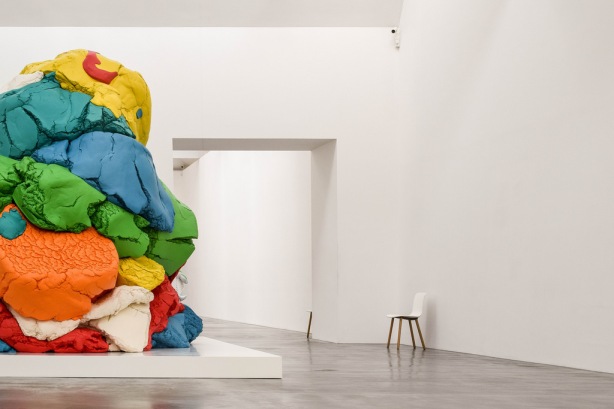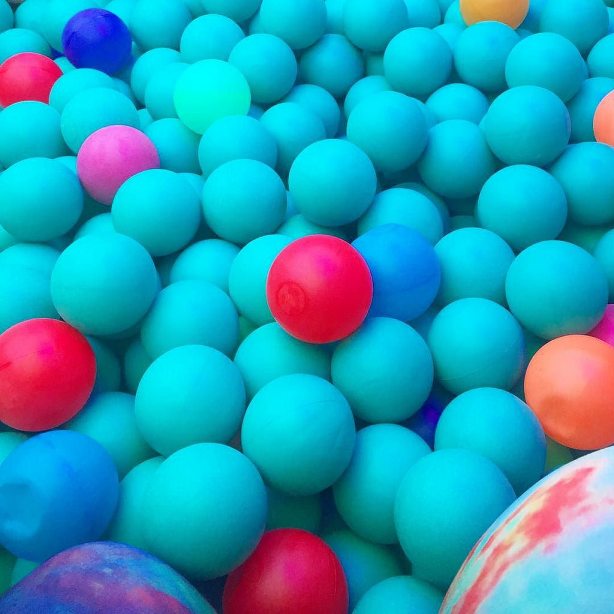When we use the word play it conjures up lost days as a child making sandcastles on the beach or tents from sheets on a rainy day. It reminds me of free time, unrestrained joy and creative interludes in the drudgery of normal life. Play means fun.
If I use the word in the classroom, the atmosphere changes; students are more free with their experimenting without boundaries and restrictions. But often they don’t know what to do; they have forgotten how to play in a learning context. My students are Middle School but I am sure that High School students are the same. So, when did they forget how to play when learning?
Teenagers play all the time when learning a new video game, trying things out, failing, trying again, but they don’t equate the same when at school.
Being playful appears to stop at Middle School, perhaps as they may look foolish in front of their peers, are fearful of making mistakes or maybe they just think they are too old for play any more having transitioned from Primary School.
As for adults; we play even less when learning something new.
So who told us to stop playing?
Picasso stated that,
All children are artists. The problem is how to remain an artist once they grow up.
What is play?
The Oxford dictionary describes play as:
activity engaged in for enjoyment and recreation, especially by children.
to engage in activity for enjoyment and recreation rather than a serious or practical purpose.
Play is a fundamental part of Kindergarten or pre-school, taking up much of these youngster’s day. Play is important to build imagination, collaboration and friendships and they are “developing their language, math, and social-interaction skills.” (Osei Ntiamoah, The Joyful, Illiterate Kindergarteners of Finland, October 1st 2015). Further more, according to her research study The Power of Play, “in the short and long term, play benefits cognitive, social, emotional, and physical development…When play is fun and child-directed, children are motivated to engage in opportunities to learn”.
But is play just for the young learners?
Get the Play-doh out!

Photo Credit: el genio del dub Flickr via Compfight cc
There is nothing more satisfying than playing with a lump of clay, plasticine or play-doh. At any age, the feel of the soft dough (and the smell) brings back memories of childhood and a uncontrolled time of wondrous abandonment! As an art teacher, my classes go quiet when clay is out and students would genuinely choose this medium above all others! But clay work higher up the school is far less used and painting, drawing and photography dominate our exhibitions every year. Other sculptural media feature but less so ceramics. Is this due to their fear of failure or just that we don’t allow them to play enough once past Primary school?
So how can we bring back fearless play and incorporate Play-doh into other curriculum areas?
In the Edutopia article “15 ways to use Play-doh in the High School classroom” (Carrie Wisehart, 6th November 2017) she reminds us that “Create is at the top of Bloom’s Taxonomy. When students are forced to synthesize what they’ve learned and make a sculpture, they are doing some crazy critical thinking. Play-doh is a great way to keep students engaged, let them use their hands, employ creativity, and you can have a new and different form of assessment that is actually fun.”
We remember when we engage.
Real world play (a bit like imaginative play, make believe or role play) may well be the way forward for many of our older students. In the article, “How to bring Playfulness to High School students” (Zaidee Stavely Mindshift July 24th 2015) students are more motivated when faced with problems to solve that take them beyond the classroom walls. Arana Shapiro, director of school design at the Institute of Play, believes that “when you start with content, and then you think about play, you often think about a game like ‘Jeopardy’ and the facts that kids need to know. If you can really dig deeper into the understandings you want kids to have five or 10 years down the road, those are almost always real situations.”
Play lights up our brains
Elizabeth Perry, in her recent talk “Play On” at the Learning 2 conference in Warsaw, Poland, reminds us that almost all creativity involves purposeful play. She talks us through her own experiences of new learning and how she nearly gave up when faced with a failed drawing.
“stay playful by doing something badly, then keep doing it”
You can read more on the creative exploits and daily drawings of Elizabeth at her blog, Wool Gathering.
 MIT Mitchel Resnick
MIT Mitchel Resnick
The Importance of Play
When trying out something new, play offers no boundaries and no assessment, allowing us the freedom to experiment to learn.
One of my most favourite TED talks, “Watch me play…the audience” shows Bobby McFerrin “playing” the audience as an instrument and tapping into their ability to learn music on the spot:
There is an inherent need for play in us all, whether just to let off steam, as an antidote to our stressful lives or as genuine therapy.
Child’s Play
Play therapy (for adults) is a thing. In fact, in the Telegraph article “What’s behind the infantilising trend for adult play?”(The Telegraph, 3rd March 2016) I discover there are “creative counsellors” helping clients to let go and revisit the footloose days of their childhood, playing with sand and wellness centres with therapeutic play practitioners. Husni Bey, founder of Creativity Unmasked, believes, “creative play can help connect us with the subconscious, free emotional blockages and develop our confidence, optimism, self-worth and personal growth.”
We get lost in play and stop thinking.
Popping up in the UK are adult soft play nightclubs. The first, in Birmingham at Amusement 13, hosted a “Regression Session”, with bouncy castle, a lego lounge and ball pits and BallieBallerson, in London, boasts 250,000 clear glow-in the dark balls in its adults-only ball pit bar, pulsing away to the music!
That’s it! I’m off to bounce away my Monday blues- care to join me?
Some of the most popular buys on Amazon this Christmas were adult colouring books and board games. In our busy and technology driven lives these retro tools give us a well earned breather and a step back into how it used to be before were were permanently connected.
Don’t get me wrong, I love my devices but we need to strike a balance and games, books and even jigsaw puzzles are a nod back to the days of calm and uninterrupted focused, unstructured play.

Photo Credit: mondays child Flickr via Compfight cc
But is it just a fad or a need for nostalgia?
In the article “How jigsaw puzzles became the latest warriors in the battle against the digital revolution” (Telegraph, March 26th, 2017), Sara Allbright, senior buyer for John Lewis says, “People see it in terms of trends like mindfulness in a world of technology,” says Allbright. “Using things like jigsaws to re-engage and take a moment away from the day-to-day.”
What sort of play do you remember and what do you think of digital vs traditional methods of play?
Learning a new tool
Just this week, I attended the local ADE meet up where we were invited to play around with the relatively new tool Apple Clips on our phones. We were challenged to tell a story using simple images and video clips including natural, outdoor and close up shots as well as selecting from some quotes to include.
We had 20 minutes to collaborate with other ADEs, have fun and learn the tool. Chaos and laughter ensued. The results were hilarious, clever and downright silly (ours) but it took this unstructured play to let us loose with our creativity and get to grips with the app. Needless to say we will all be looking for ways to include it in our classes as a result.
Mark Anderson (@ictevangelist) has written a great post on using Apple Clips in different curriculum areas
https://ictevangelist.com/5-ways-to-use-apple-clips-in-the-classroom/
100 day project
This week I decided to commit to being more playful as a result of this post. I invite you to look at the 100 Day project, which originated in New Zealand or follow the posts on Instagram. Participants sign up online (this year’s starts on May 22nd) and commit to posting one creative thing every day for 100 days. Beck, an art teacher colleague, and I decided to both participate so we can encourage each other and track our creativity over time, much like how Elizabeth first started her daily 10 minute drawings.
Watch this space for the final (100) artworks.
What would you choose to do creatively daily for 100 days?
What would you like to pursue to bring back the child like playfulness in you?
What ways can you bring play into your classroom?
